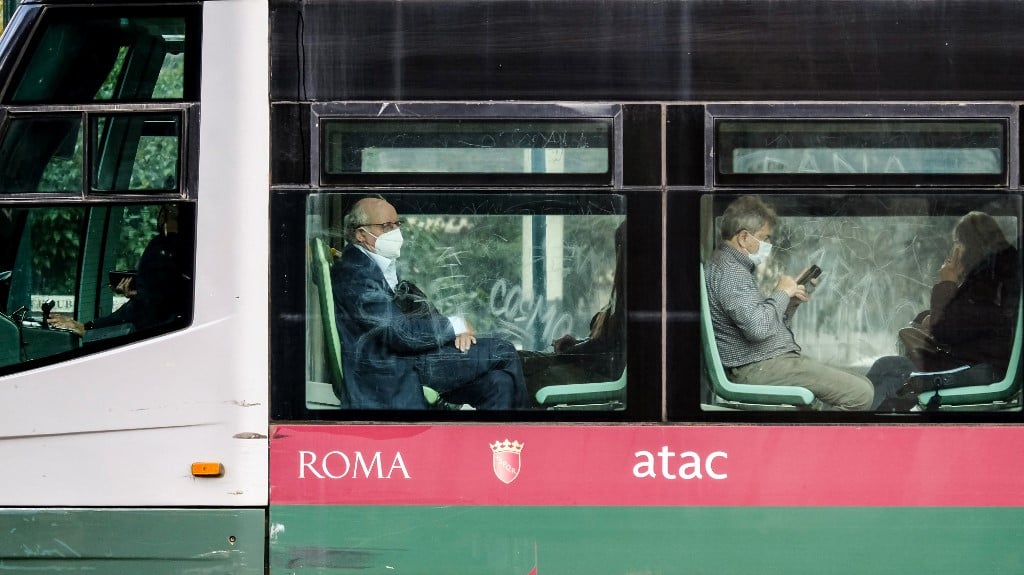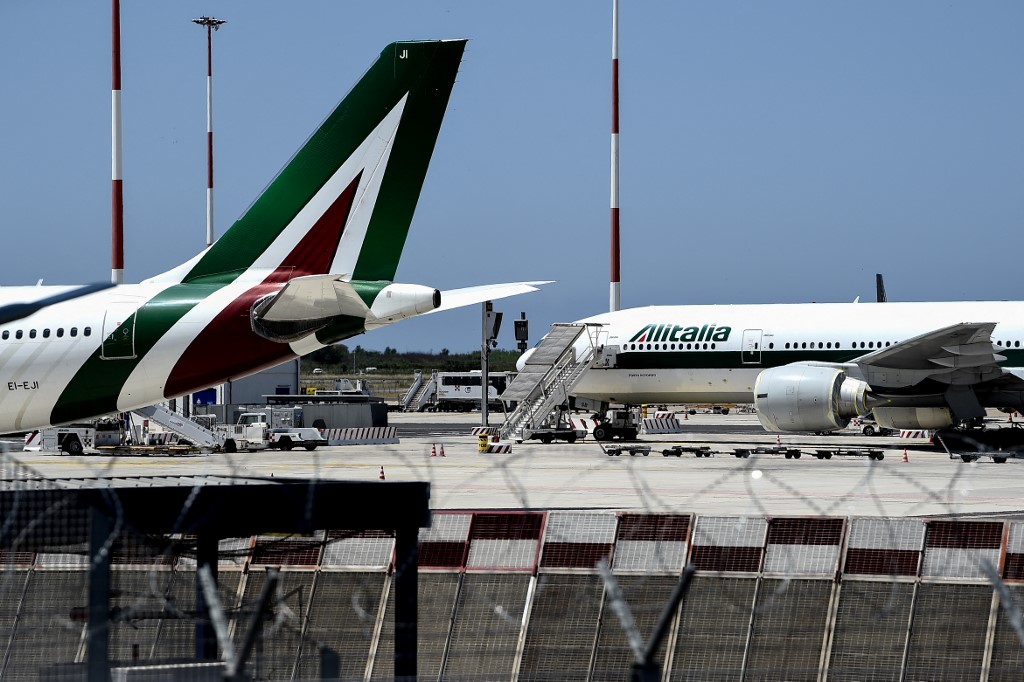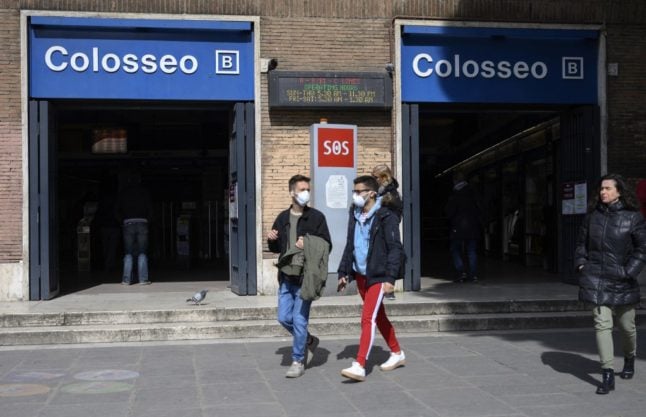Tickets for the metro, tram and bus are conveniently all the same in Rome, as local public transport is managed by a single operator: ATAC.
That means that for a fairly reasonable flat rate of €1.50, you can get pretty much anywhere in the city (though not to and from the airport, see below) for 100 minutes on one ticket, hopping between buses, trams, and different metro lines.
The only thing you can’t do is use the same ticket for more than one metro journey – once you’ve exited the turnstile, you won’t be able to get back in the subway on the same pass, even if it’s within the 100-minute window.
You can even get at least part of the way on some train lines, though here things get a little complicated – see our section on trains below.
If you’re using the metro, your ticket will be automatically validated in the process of using it to go through the barriers.
On the bus or tram, by contrast, you’ll need to remember to stamp your paper ticket (or swipe your payment card, or activate the ticket on your app) for it to be considered valid when inspected.
Having an unstamped/unactivated ticket on you doesn’t count, and can land you with fines of up to €500.
There are several ways to get a ticket:
Contactless card payments
For a while now, ATAC has been rolling out its ‘Tap & Go’ payment system that allows users to pay their fare with a contactless bank card in metro stations throughout the city.
As of January 2023, the operator says the service has been expanded to all ‘surface vehicles’ (buses and trams).
Mastercard, Visa and American Express credit cards and Mastercard, Maestro and Vpay debit cards are accepted. The Tap & Go system also works with other contactless payment methods including smartwatches and phones.
ATAC says that when using this payment method – unlike with paper or app tickets – you should revalidate every time you switch bus or tram; if it’s within the 100-minute window, you won’t be charged again.
The company says you should present the card/device used to make the payment to controllers conducting checks.

Paper tickets
Visitors to Rome are often flummoxed by the process of obtaining a physical bus or metro ticket.
If you’re at the metro station, you should be able to buy them from a machine – though many don’t accept card, and they’re not infrequently out of order.
If you want to hop on a tram or bus, you’ll instead need to seek out a tabaccaio (newsagent’s or tobacconists store), identifiable by the blue ‘T’ sign hanging above the shopfront.
READ ALSO: Why the tabaccheria is essential to life in Italy – even if you don’t smoke
Like most small shops in Italy, tabacchi tend to close from around 1-4pm in the afternoon, meaning if you need a ticket then, you’ll likely be out of luck.
Rome buses and trams are equipped with small yellow boxes that will validate your ticket upon insertion. The card will be stamped with the expiry time so you know exactly how long it can be used for.
You’ll only need to validate your ticket the once, regardless of how many different buses and trams you hop on.

Apps
The MooneyGo (formerly myCicero) app allows you to buy ATAC tickets in advance that you can validate on your phone whenever you want to use them. You’ll be issued with a QR code that can be used to open metro barriers.
Other apps suggested by ATAC are Telepass Pay, TicketAppy, DropTicket and Tabnet.
Bear in mind you’ll need to have a functioning phone for the duration of your trip; if you think you might be in danger of running out of battery, it’s a good idea to carry a paper ticket as a back up (or just use your bank card instead).
READ ALSO: Six essential apps that make life in Rome easier for foreign residents
Since you can easily hop on and off buses and trams in Rome, some people don’t bother to validate their ticket on the app unless they see a controller approaching.
Inspectors have got wise to this, and if they can see from the timestamp that you validated your ticket within seconds of them arriving to check it, you risk getting fined anyway.

Trains
You can get some of the way on some train lines with ATAC metro tickets.
The Roma-Ostia Lida Ferrovia train will take you all the way to the coastal town of Ostia (technically a part of the City of Rome) with a €1.50 ticket.
To travel the 10 minutes from Trastevere train station to Tuscolana train station, though, you’ll need to buy a separate train ticket.
This ATAC map shows the metro, tram and train lines it services in Rome; the train stations marked in red font are the farthest point you can get to on an ATAC metro/bus ticket.

Types of pass:
In addition to the 100-minute ticket, you can get a 24 hour, 48 hour, or 72 hour pass, for €7, €12.50 and €18 respectively.
None of these options are considered particularly great value, however, as you’d need to make a large number of journeys – each 100 minutes apart – in a short time span to save any money.
If you’re sightseeing in Rome and planning to do a lot of moving around, you might want to consider the RomaPass; for €32, you get all public transport for 48 hours plus entrance to one Rome attraction (not the Vatican) covered; €52 will get you 72 hours on public transport and entrance to two attractions.
Bear in mind that on the first Sunday of every month many museums and attractions open to the public for free in Rome (with corresponding crowds).
If you’re sticking around for longer, a monthly ATAC pass is very good value at €35 – note that it starts fresh each calendar month, so if you arrive in the middle of the month you might want to wait a couple of weeks.
Airport travel
None of these passes or tickets will get you to and from Rome’s two airports, Fiumicino and Ciampino – though provided you travel in the daytime, these are both straightforward and inexpensive journeys.
A standard regional train goes between between Rome’s major train stations and Fiumicino for €8 each way, with frequent departures.
The town of Ciampino also recently gained a train station that passengers can reach via an airport shuttle bus; you can travel to and from the airport to the centre of Rome for as little as €2.70 one way.





 Please whitelist us to continue reading.
Please whitelist us to continue reading.
FWIW, at least on the Apple App Store, the MyCicero app rates very poorly. I feel like anything reviewed at less than 4 stars is not great, but MyCicero only gets 2.8 stars. Of the other “suggested” apps mentioned here, Telepass Pay rates highest (4.7 stars). [Caveat: I haven’t tried any of these apps.]
Hi, there is no mention in your article of the 7 day bus/metro/train ticket which was sold at €25, has it been discontinued ?
It was available when I was in Rome in 2022
many thanks
Peter